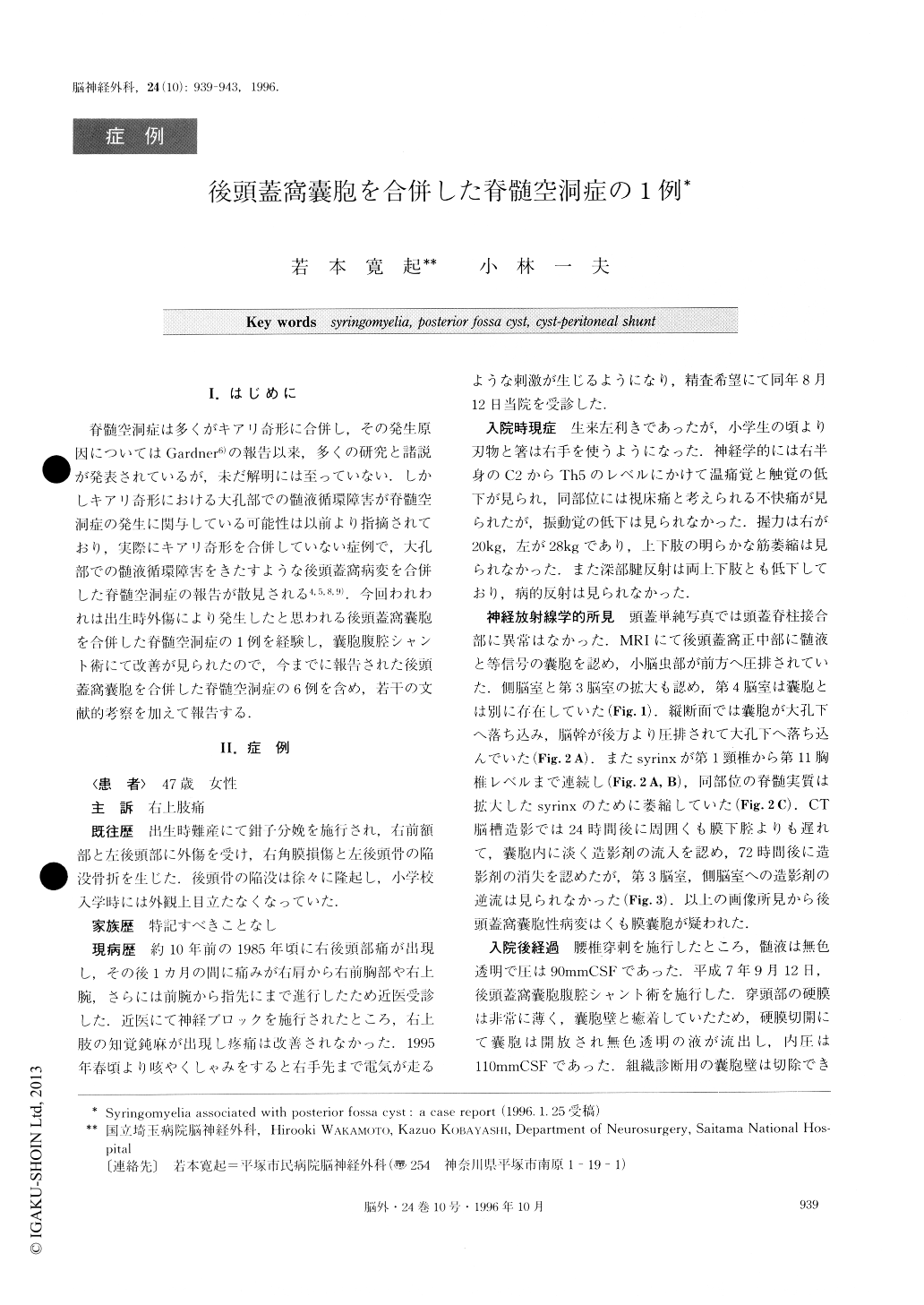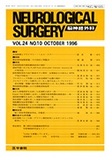Japanese
English
- 有料閲覧
- Abstract 文献概要
- 1ページ目 Look Inside
I.はじめに
脊髄空洞症は多くがキアリ奇形に合併し,その発生原因についてはGardner6)の報告以来,多くの研究と諸説が発表されているが,未だ解明には至っていない.しかしキアリ奇形における大孔部での髄液循環障害が脊髄空洞症の発生に関与している可能性は以前より指摘されており,実際にキアリ奇形を合併していない症例で,大孔部での髄液循環障害をきたすような後頭蓋窩病変を合併した脊髄空洞症の報告が散見される4,5,8,9).今回われわれは出生時外傷により発生したと思われる後頭蓋窩嚢胞を合併した脊髄空洞症の1例を経験し,嚢胞腹腔シャント術にて改善が見られたので,今までに報告された後頭蓋窩嚢胞を合併した脊髄空洞症の6例を含め,若干の文献的考察を加えて報告する.
We report a case of a 47-year-old woman with a pos-terior fossa cyst associated with syringomyelia and hydrocephalus. Her birth was traumatic and she hadsuffered a fractured skull. About 10 years prior to com-ing to our department she had occipitalgia and a pain had developed over a month from her right shoulder to hand. Shortly before presenting occasional electric-like shocks were felt in her right hand associated with coughing and hiccuping. Magnetic resonance imaging (MRI) revealed a large midline posterior fossa cyst, hydrocephalus and syrinx (C1-Th11). Cisternography could not demonstrate communication between the cyst and the subarachnoid space and the 4th ventricle was present but without communication with the cyst. The cyst was tentatively diagnosed as an arachnoid cyst. One week after placement of a cyst-peritoneal shunt, CT scans showed a decrease in cyst and ventricle size and 2 months later a follow-up MRI revealed resolution of the syringomyelia. We suspected that cyst-peritoneal shunt was effective for this patient who had syring-omyelia associated with incommunicated posterior fossa cyst.

Copyright © 1996, Igaku-Shoin Ltd. All rights reserved.


